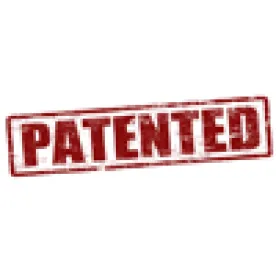In defending against obviousness challenges before the Patent Trial and Appeal Board (“Board”), arguments directed to prior art references being non-analogous art to a patent owner’s claimed invention have had relatively limited success. However, a recent decision from the Board serves as reminder to patent owners that even less popular arguments, such as non-analogous art arguments, can deliver a knockout blow to post-grant challenges.
In Schott Gemtron Corp. v. SSW Holding Co., Inc., IPR2014-00367, petitioner Schott Gemtron Corp. (“Schott”) sought Inter Partes Review of certain claims of U.S. Patent No. 8,286,561 (the “‘561 Patent”) owned by SSW Holding Company, Inc. ("SSW"). See IPR2014-00367, Paper 62 at 2. The ‘561 Patent is directed to refrigerator shelving having a hydrophobic spill containment pattern designed to act as a barrier to prevent spilled liquid from spilling onto other surfaces. Id. at 3.
Schott challenged the ‘561 Patent on several obviousness grounds, all of which relied upon the same primary prior art reference: U.S. Patent No. 5,948,685 to Angros, directed to a microscope slide or diagnostic plate having a containment border for containing a liquid. Notably, Schott had previously challenged the independent claims of the ‘561 Patent in a separate post-grant proceeding, in which the Board found the same primary prior art reference to be non-analogous art to the claims at issue. See Schott Gemtron Corp. v. SSW Holding Co., Inc., IPR2013-00358 , Paper 106.
A prior art reference qualifies as prior art for an obviousness determination under 35 U.S.C. § 103 only when it is analogous to the claimed invention. A reference is considered analogous prior art if: (1) the reference is from the same field of endeavor as the claimed subjected matter, or (2) the reference is reasonably pertinent to the particular problem with which the inventor is involved. In re Bigio, 381 F.3d 1320, 1325 (Fed. Cir. 2004). At issue in the Schott case was whether the primary prior art reference qualified as analogous art under the second prong of the Bigio test.
In addressing the Board’s previous finding that the Angros prior art reference was non-analogous art, Schott argued that the Board’s earlier finding was based on a flawed analysis, and that a prior art reference need not address every problem addressed by the claimed technology or provide every benefit ultimately provided by the technology to be analogous art. IPR2014-00367, Paper 62 at 18, 21. Schott specifically argued that the primary prior art reference was analogous art because the problem faced by the inventors of the primary prior art reference was the same as the problem faced by the applicants of the ’561 patent, namely, how to contain a liquid in a predetermined area using a structure that is thin and does not extend significantly above the top surface of the panel. Id. at 18.
The Board disagreed, finding that Schott’s arguments failed to sufficiently address the full scope of the problem pertinent to the inventors of the ’561 patent, which the Board characterized as containing liquids in a predetermined area while maximizing the available storage space on a shelf and otherwise avoiding or minimizing disadvantages in prior art encapsulated shelves. Id. at 21. The Board relied on the Federal Circuit decision of In re Klein, 647 F.3d 1343 (Fed. Cir. 2011), for the proposition that a prior art reference in a separate field of endeavor will not be analogous art unless it is pertinent to the entire problem being solved by the challenged patent. Id. at 21 (emphasis in Board’s decision). Thus, because the primary prior art reference was only pertinent to some aspects of the patentee’s problem, rather than the entire problem, the Board found the Angros reference to be non-analogous art. Id. at 23. As a result, the Board found that Schott had failed to carry its burden of proving claims of the ‘561 Patent unpatentable for every ground upon which the ‘561 Patent had been challenged.
The Schott case demonstrates that infrequently successful arguments, such as non-analogous art arguments, can be dispositive of post-grant proceedings, and serves as a reminder to patent owners that all arguments should be considered in defending against obviousness challenges. The Schott case is also a reminder to patent challengers to be wary of relying upon a single primary prior art reference for all obviousness grounds upon which a patent is challenged.




 />i
/>i

